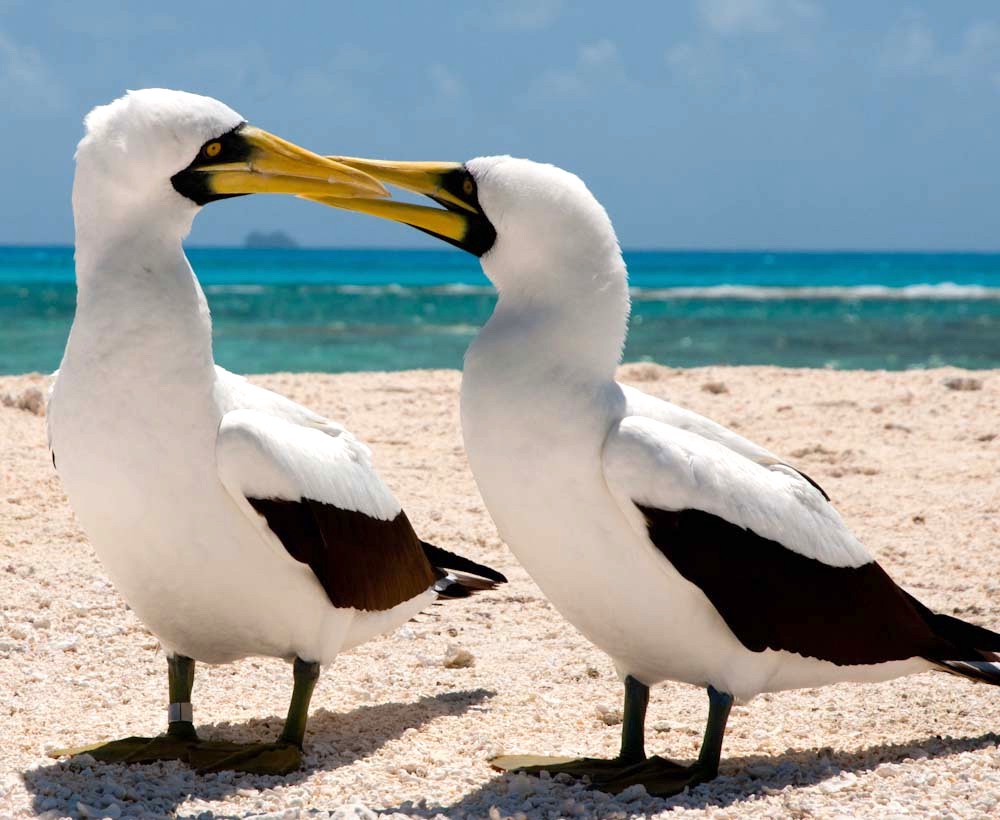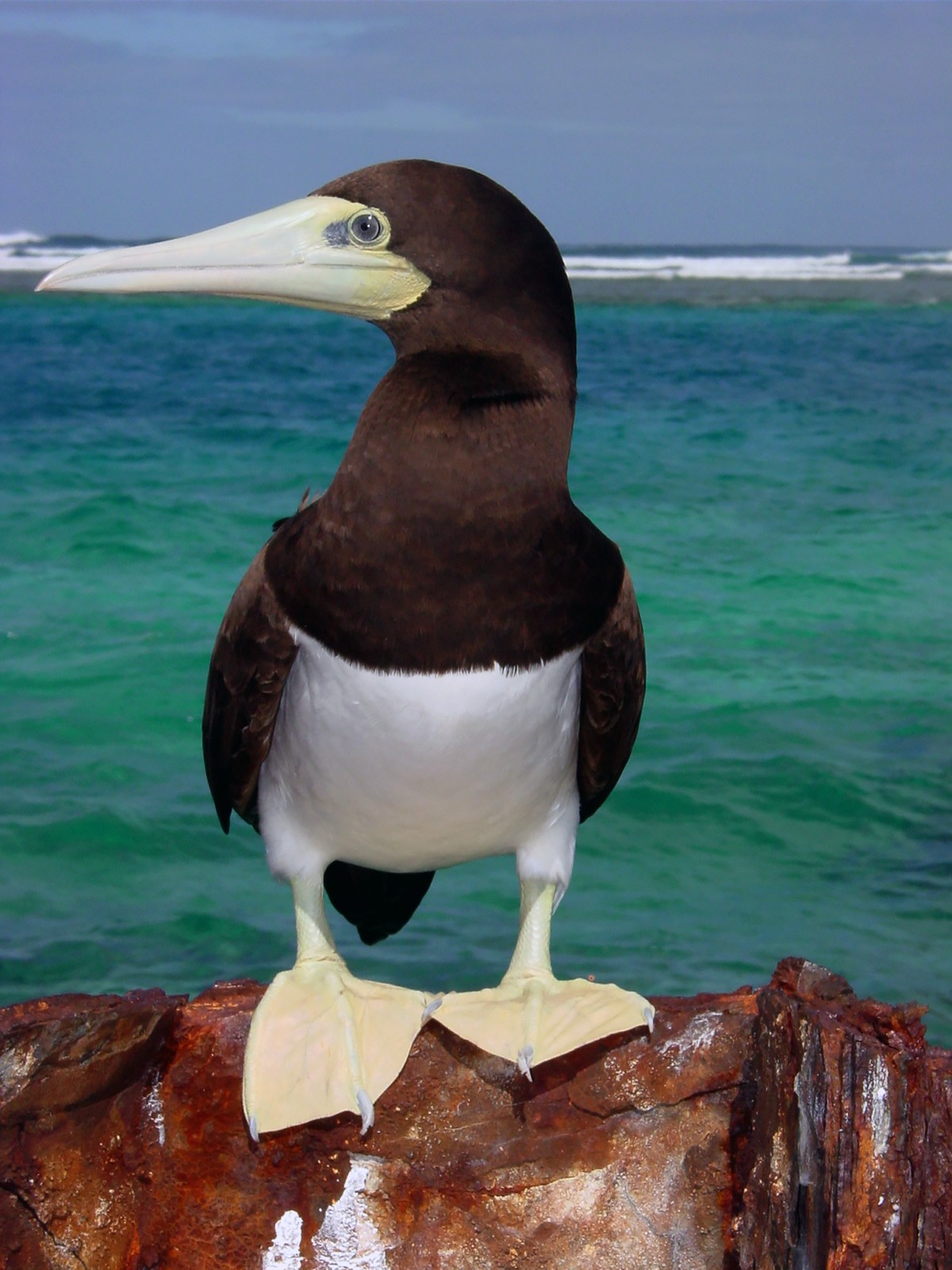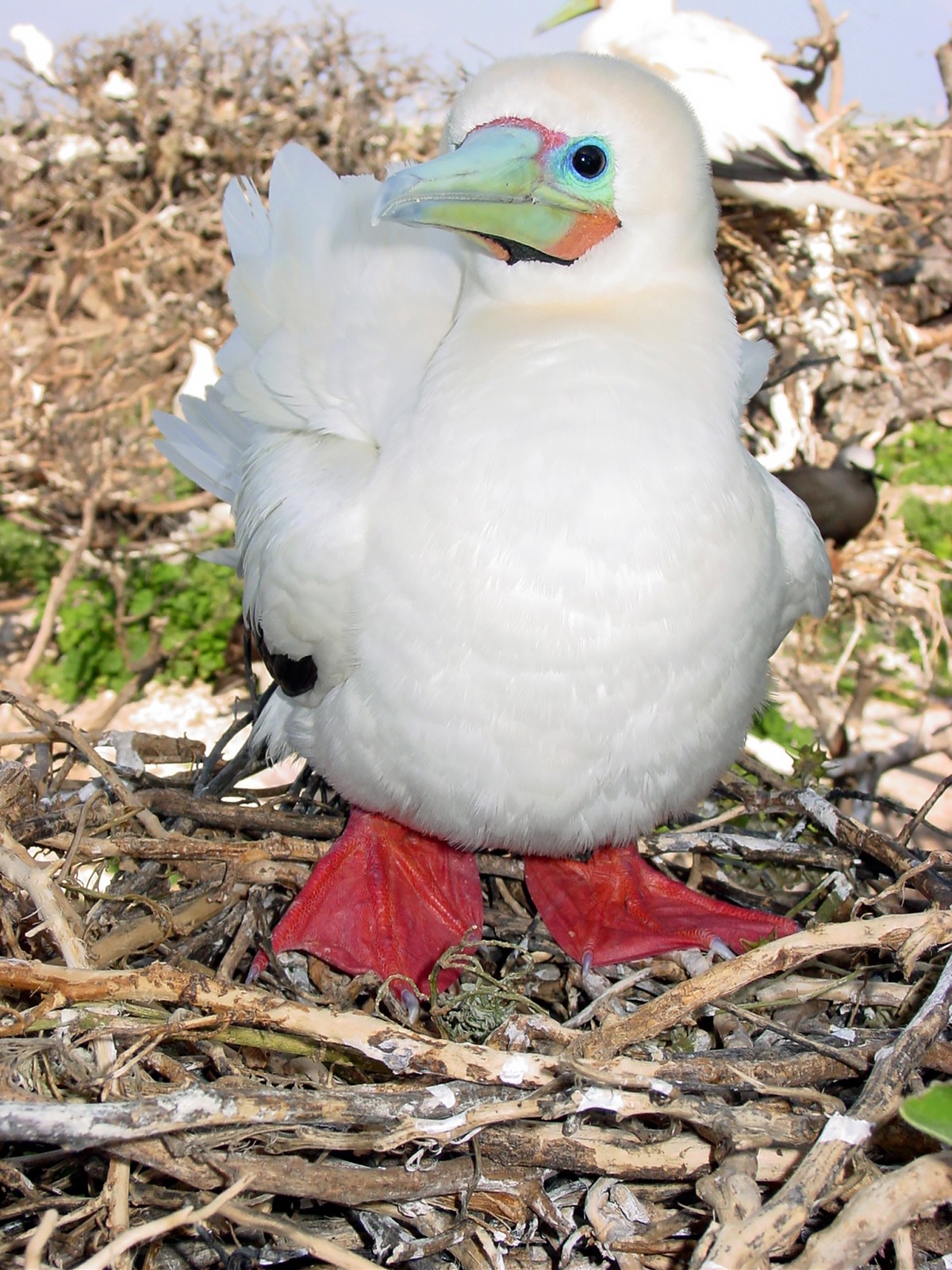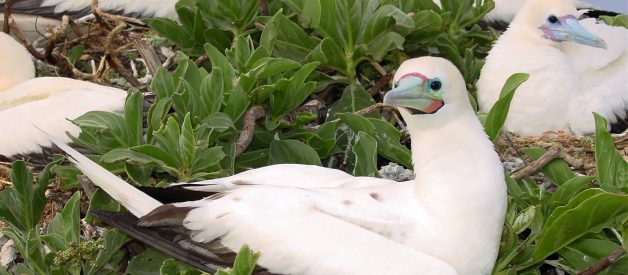by D. Paul Brown, U.S. Fish and Wildlife Service
 Masked Boobies Courting by Lindsay Kramer / USFWS
Masked Boobies Courting by Lindsay Kramer / USFWS
Red-foot, Blue-foot, Brown, and Masked- these are just some of the seabirds living across the Pacific that we call boobies. Boobies (Sula spp.) are large seabirds made famous for the brightly colored feet in a few species. Those feet have led to the common names like red-footed and blue-footed. But why do we call them boobies?
 Red-footed Boobies, USFWS
Red-footed Boobies, USFWS
The name comes from bobo, a Spanish slang term for stupid- a reference to how easily the birds could be captured by 18th century Spanish sailors. Boobies, like most seabirds, can spend weeks or months out at sea. So when a ship passes by, offering a convenient place to land for a while, boobies often take the opportunity. Once aboard, their lack of fear for humans then made them easy meals for the sailors.
Where Boobies are Found
All six species of booby are found in the Pacific region- three of these can be found within USFWS areas. Boobies, like most colonial nesting seabirds continue to show little fear of humans. Having evolved over the course of 15 million years to nest on remote islands and atolls, boobies have learned over the millennia that they face no threats on land. The relative ease at being able to walk up to these large and charismatic birds has made them a draw to tourists. However, research has shown that the boobies are slowly learning that humans may be something to be feared after all. Booby nests are being built further from established tourist trails and the birds have been shown to vocalize and show signs of distress in the presence of humans.
 Brown Booby / USFWS
Brown Booby / USFWS
Booby Courtship
One reason tourists flock to see these birds is because of their elaborate courtship dances, made even more prominent by the often brightly colored feet. These courtship rituals are highly complex behaviors and can have at least nine separate movements. The two most striking to humans have been described as sky pointing and parading. Sky pointing has described as a display where the male throws his head back pointing his beak towards the sky and then giving a whistling call. Parading is the best known dance move and often gives boobies a comical appearance from the human perspective. In this display one or both birds in the pair- with the tail awkwardly pointed upwards- walks with an exaggerated swaying movement from side to side. Additionally, in the red-footed and blue-footed boobies, the parading also includes flaunting their brightly colored feet by lift one foot and then the other in display to the potential mate.
Booby pair-bonding behavior could be described as a lot like humans. Generally boobies are monogamous birds that tend to mate for life. However, birds do take new partners if their previous mates fail to show at the nesting site during breeding season, most often as a result of predation at sea. Yet, predation is not the only reason for the break-up of couples. Divorce is not unheard of in these species. Several types of divorce have been scientifically described in boobies. This is where one member of the pair actively deserts the other or when an intruder forcibly splits the breeding pair apart and then takes its place. Additionally, extra-pair copulations sometimes occur, as do same-sex couples (usually female-female) raising young.
 Red-footed Booby, USFWS
Red-footed Booby, USFWS
Nest Competitors
One thing that shocks and amazes those who do get to see these birds is siblicide. Along with boobies, several other species of bird are known to perform siblicide, where one hatchling directly or indirectly causes the death of a nest mate. Much of the time it is termed facultative siblicide- where a chick forces out another due to a shortage of food. But in at least one booby species they practice obligate siblicide- where the death of another chick always occurs due to another regardless of food availability.
In Nazca boobies, the parents always lay two eggs a few days apart. The second egg is an insurance policy of sorts in case something happens to the first egg or it is infertile. If both eggs end up hatching then the older, larger chick will always push the other from the nest. The parents will not intervene and the chick banished from the nest will always perish.
 Masked Boobies on Tern Island at Hawaiian Islands National Wildlife Refuge by Lindsey Kramer / USFWS
Masked Boobies on Tern Island at Hawaiian Islands National Wildlife Refuge by Lindsey Kramer / USFWS
Those chicks that survive to adulthood will grow to be different sizes depending on their gender. Like many birds, female boobies are larger than males- sometimes by as much as 40% larger. Being larger requires the females to eat comparatively more food and researchers that have studied the feeding behavior of boobies found that females of some species dive deeper and longer than males in search of food. Also the females eat slightly larger food ensuring that males and females are not competing for the same food resources.
Feeding Time
Booby feeding behavior is spectacular to witness. The birds plunge down into the water headfirst with wings spread from as high as 100 feet- their size and speed carrying them to depths up to 30 feet under the water. Most dives however, are much shallower (6- 12 feet) as the birds are visually hunting for small fish and squid they see near the surface from the air.
The Danger of Plastics
After 3?4 years the young adults return to the nesting colony to start the next generation. Luckily many of these colonies can be found in U.S. National Wildlife Refuges and Marine National Monuments in the Pacific ensuring that these birds have a safe place to nest and raise their young. However, even in these remote and protected places there are threats to these and other seabirds. Ocean pollution and marine debris are significant concerns for natural area managers- and plastics are especially problematic. Plastics show up in the nests, young, and adults and accidentally eating plastics can kill birds. Those that survive all the natural and human-caused perils can live for two decades.
So, far from being dumb, boobies are well adapted to their oceanic lifestyle. They live at sea for months at a time and return to land to nest and raise their young. So long as they are allowed to live their lives, boobies will continue to captivate us as the chick in this video demonstrates.


